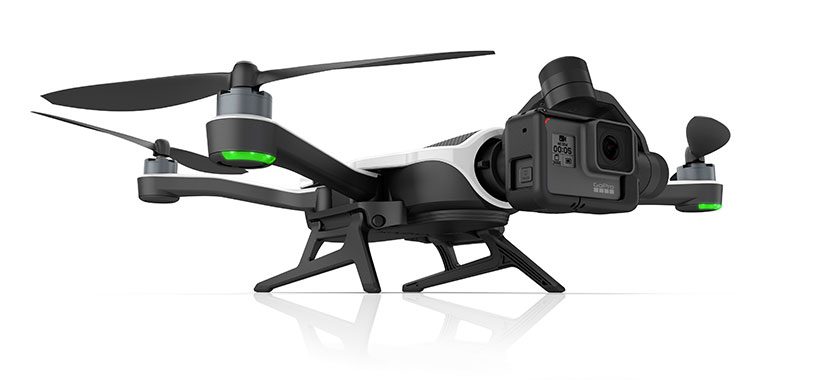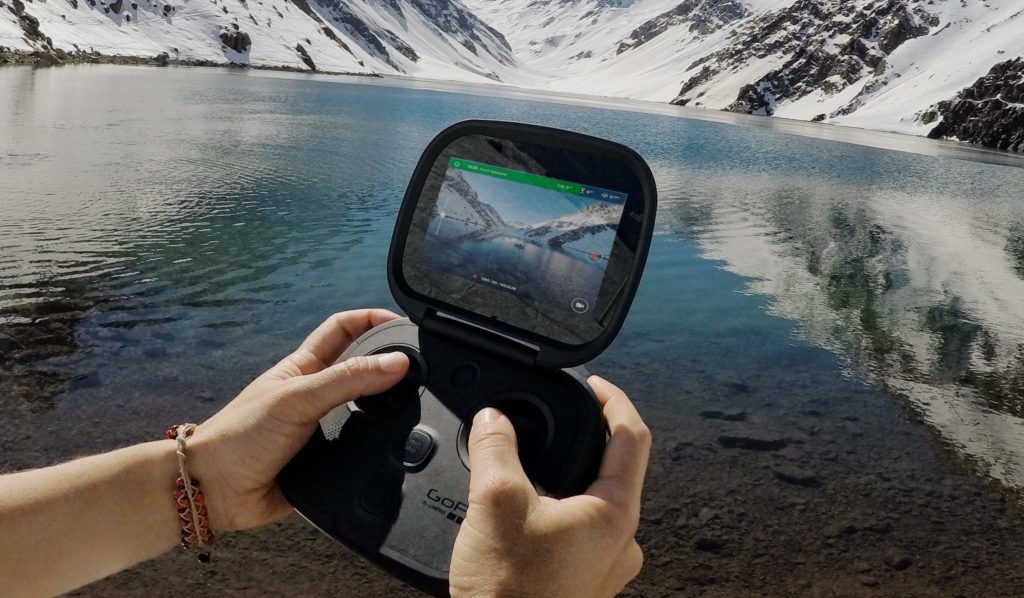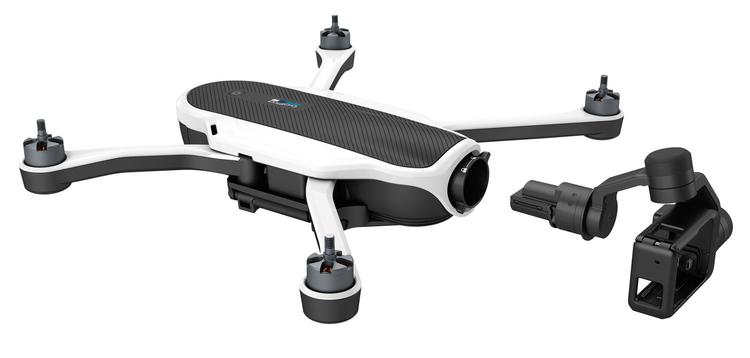Manufacturing a decent drone isn’t easy. Staying afloat seems to be just as hard. Just ask the founders of Lily Robotics, who received almost $50 million in pre-sales and VC funding and still couldn’t deliver to a single customer. Or 3DR, who pumped plenty of capital into the Solo but have now had to retreat from the hardware market.
Those are perhaps the extreme cases, in which shifting markets or shutting down completely are the only options left on the table. But equally extreme has been GoPro’s entrance into the consumer drone industry. A global brand, plenty of money and existing products that fit right in with aerial technology: the scene should have been set for a US hardware revival.
Read more: The Defining Moments of the Consumer Drone Industry
So far though, it hasn’t worked out so well. After putting plenty of effort into making sure the GoPro Karma was the most highly anticipated drone ever, launch day was a little disappointing. The Karma didn’t stack up well against its rivals or have many outstanding features. And a few days later, DJI announced a new drone, the Mavic Pro, which trumped the Karma in terms of portability and performance.

Then, things went from bad to worse. A matter of days after shipping the first Karma drones to excited customers, the product had to be recalled. Some Karmas were falling out of the sky for no apparent reason. It’s now back on the market, but in many ways the damage is done. GoPro’s first step into the drone industry has been a disaster. So what next?
We already know that GoPro has plans to push ahead with the Karma range beyond 2017. So what does the company – and the Karma 2 – need to do to catch up, keep up and somehow get ahead of DJI?
Win Back the Trust of Drone Pilots
One of the biggest things pilots look for when choosing a drone is reliability. Many enthusiasts will already be thinking twice about buying a Karma 2 in the future because of how the first, quite literally, went down. Winning back the trust of current and future pilots will take time, but it’s not impossible.

After all, plenty of the early Phantom models were renowned for a tendency to fly away of their own accord. The next Karma needs to ease doubts by having zero reliability issues from the get go. This will likely mean a change in the testing process for GoPro, which can’t have been rigorous enough for the original Karma.
The Karma 2 Should Keep Offering Value
Reliability isn’t enough on its own to compete with the likes of DJI. It’s simply a prerequisite for success in the consumer drone industry. Any product that’s costing over $500 is expected to perform reliably, no matter which category of technology it’s in.
For that reason, GoPro will need to continue to develop the aspects that worked in its first drone’s favor. While there weren’t many redeeming features for the Karma, two things stood out against the competition.

The first was modularity, which was certainly the Karma’s unique selling point. The drone could effectively be taken apart and split into 3 products, a flying camera, a stabilized, handheld camera or just a camera. The easy integration with all of the company’s mounts and accessories made for an interesting 3in1 proposition that can’t be matched by DJI.
The second thing that GoPro has to keep doing is offering decent value for money. For all the Karma’s flaws, it was never really seen as overpriced – especially considering it was aimed at current GoPro users who would already have a camera to fly with the drone. For some context on how reasonable that is, the GoPro Hero5 Black, which comes as part of the full $1,099 package, retails for $399 on its own.
Unfortunately, competing with DJI on price is only half the challenge.
Catch Up in Terms of Features
One of the most noticeable things when comparing the Mavic Pro and the Karma is the chasm between the two in terms of technology. The lack of a tracking feature or any kind of obstacle avoidance severely limits GoPro’s first drone.
Given the hype and all the talk of how it would be a ‘complete aerial photography solution’, there isn’t much there when we dig into the substance. DJI’s obstacle avoidance, tracking and general safety features are by no means perfect, but having them gives pilots more peace of mind and ultimately a more creative tool.
It goes without saying that the Karma 2 will need to get up to spec and match what DJI currently has on the market. Unfortunately for them, that doesn’t mean just fighting with the Mavic Pro. Since that launch last year, the Phantom 4 has been launched in 2 updated versions. The Phantom 4 Pro, for example, has obstacle avoidance in 5 directions and advanced visual positioning. Even the new $500 DJI Spark has a degree of collision avoidance tech, tracking features and a 3D-Sensing system.
One of the biggest challenges GoPro and any other potential DJI rival faces is the speed at which the Chinese manufacturer is able to get new drones to market. This in turn drives prices down for DJI’s older models. Which brings us to…
The Karma 2 Needs to Get Ahead of the Game
Any challenger to DJI needs to be able to iterate and bring to market the fruits of R&D, fast. But that’s easier said than done. And with there being so much catching up to do, it’s difficult to see how GoPro’s Karma 2 can ever get ahead.
But it might not be impossible. If the Karma 2 can continue to play on the modularity that makes it unique while bringing new technologies to the table, who knows what it might achieve? Part of this could well be in software department: Arguably, DJI’s weakest areas are video editing and cloud storage.
If GoPro can offer a compelling solution, as it has attempted to do with the first Karma, pilots’ views could start to sway and the consumer industry may shift as a result.
Harness the GoPro Brand
Even with a drone that matches the specs of the latest model from DJI, GoPro’s lack of history in the consumer space means that many pilots will remain skeptical for a little while longer. But things could change; there’s certainly a willingness to embrace competition to DJI. With all the publicity around security issues, software violations and forced updates, appetite for more competition in the market is certainly present.
But it’s arguably when attracting new pilots that GoPro has a distinct advantage over DJI. After all, GoPro is a global brand, a household name that can tap into a significant base of existing customers.
Just as the company gained plenty of attention before the Karma launch, the Karma 2 will be given a chance – particularly by media overwhelmingly friendly to the brand.
It’s not going to be easy, but let’s not write off GoPro just yet.
Malek Murison is a freelance writer and editor with a passion for tech trends and innovation. He handles product reviews, major releases and keeps an eye on the enthusiast market for DroneLife.
Email Malek
Twitter:@malekmurison
Subscribe to DroneLife here.







[…] GoPro, one manufacturer still looking to compete in the consumer market with DJI, offered $250,000 for the drone patents alone in one […]